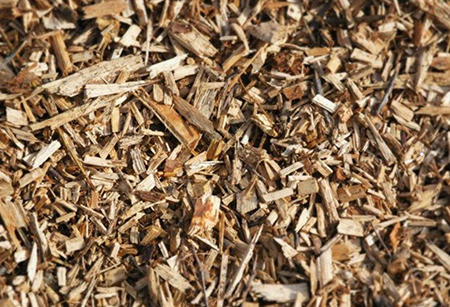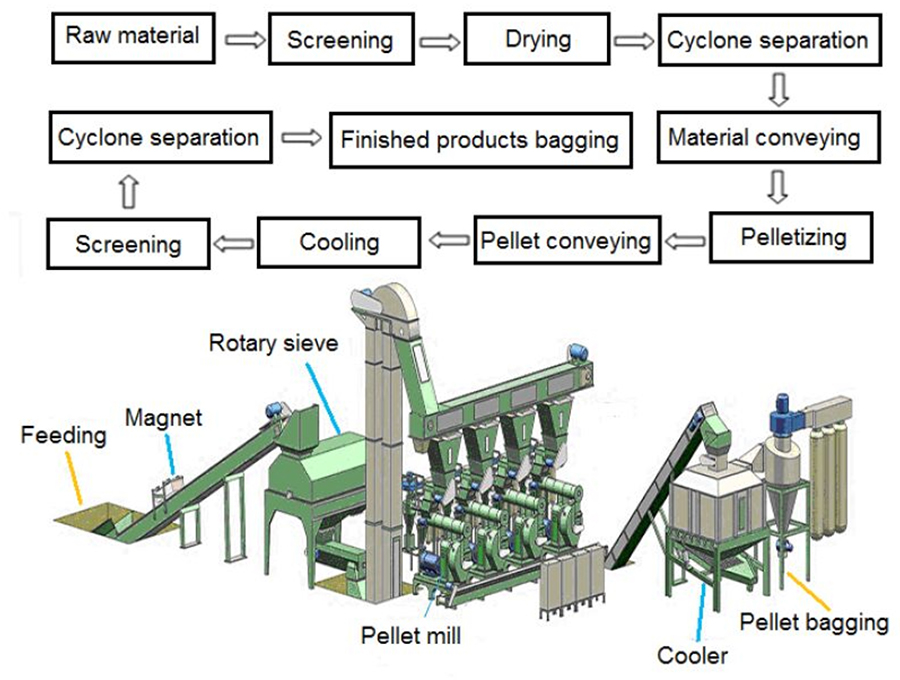In connection with the continuous increase in prices for fossil fuels and the limited world reserves, much interest in recent years has been shown in solid fuels from renewable sources, state programs are being developed, and regulatory documents are being adopted aimed at stimulating the production of bio-fuels from plant raw materials.

Wood biomass is accumulated as waste in wood processing plants, which require prompt recycling and utilization, and therefore the task of producing useful products from this raw material is undoubtedly relevant. At the same time a tense ecological situation stimulates the search for alternative less hazardous fuels. The use of pellets from wood raw materials reduces the emission of greenhouse gases into the atmosphere. At the same time, the balance of CO2 in the atmosphere is not disturbed due to the renewability of the biomass. The CO2 gas released from the combustion of this fuel is considered "neutral". Wood releases as much CO2 as it absorbed during the growth period, it is the so-called closed carbon exchange.
 However, the methods currently used, approaches to the production of fuel pellets or granules are not perfect. The absence of multifactorial, comprehensive scientific representations that take into account the most important indicators leads to insufficiently high production efficiency of this type of product. Often, the technological process of pellet production requires a commensurate amount of energy for drying and pelleting with the potential energy from the products issued. In this regard, the problem of a scientifically grounded approach to biofuel technologies in the form of pellets was sharply raised, which requires defining the interrelations between parameters appropriate for the real process of pelleting for efficient management of all parameters of pellet production technology and for obtaining the best levels of technical and economic indicators.
However, the methods currently used, approaches to the production of fuel pellets or granules are not perfect. The absence of multifactorial, comprehensive scientific representations that take into account the most important indicators leads to insufficiently high production efficiency of this type of product. Often, the technological process of pellet production requires a commensurate amount of energy for drying and pelleting with the potential energy from the products issued. In this regard, the problem of a scientifically grounded approach to biofuel technologies in the form of pellets was sharply raised, which requires defining the interrelations between parameters appropriate for the real process of pelleting for efficient management of all parameters of pellet production technology and for obtaining the best levels of technical and economic indicators.

The high demand for exported A1 class pellets makes the business of their production so attractive and cost-effective for the producers that the stringent requirements set by the European standard for the quality of pellets of this class encourage manufacturers to use as raw materials not only waste and by-products of timber processing but also integral wood; in this connection, the actual problem is the involvement faulty wood in the processing, the share of which in the total volume of logging is constantly increasing, and which at best is only burned.
The raw material composition is one of the main indicators that determine the quality of pellets. Understanding chemical transformations of substances that make up biomass in the process of pelletizing is necessary for the process research. The changes in the parameters of temperature, pressure, and geometry of the matrix determine the mechanism and cause the chemical composition of biomass to change due to known interaction reactions. Wood includes cellulose (40 ... 60%), hemicellulose (20 ... 40%) and lignin (10 ... 25%). Cellulose is a rich source of carbon in biomass. J. Zandersons and co-authors concluded that when wood particles are hot pressed, the bond strength depends on the transformation of the cellulose into an amorphous state. D. Hon notes that cellulose having a semicrystalline structure with strong hydrogen bonds can not readily dissolve in conventional solvents. It can not be melted before it burns. He also believes that cellulose is not a suitable binder, since it is necessary to destroy hydrogen bonds. T. Shambe, J.F. Kennedy established that hemicelluloses, found in the cell wall, consists mainly of heteropoly-lysaccharide, which is a combination of sugars different from simple glucose. Some researchers believe that natural gluing can occur in connection with the degradation of the adhesive components of hemicellulose. Lignin is a polymer with various bonds based on phenylpropane units. L. Nelson, M.M. Cox describe the structure of lignin as a complex one, consisting of two amino acids: phenylalanine and tyrosine, containing aromatic rings. The lignin molecule in the plant provides a variety of structural chains, since it acts as a binder for cellulose fibers. The presence of lignin in plant materials promotes the formation of pellets without binder substances. M. Cossy established that lignin has thermosetting properties at temperatures above 140 C and acts as an internal natural binder without addition of glue from the outside. M.N. Angtes and co-authors in the paper prove that lignin is a component that increases adhesion in the structure of wood and acts as cementing filler. P. Lehtikangas argues that with a moisture content of biomass within 8..1 15% the softening temperature of lignin decreases to 100 ... 135 C due to the plasticization of molecular chains. The adhesive properties of thermally softened lignin, as E. Granada and others believe, largely determine the strength characteristics of briquettes.
Mechanisms of gluing
One of the most important characteristics that determine the transport properties of wood pellets is the bond between the particles after pressing. Mechanisms of binding of particles have different nature depending on the composition of the raw materials, additional use of binders, preheating and hydrothermal processing of the biomass mixture, geometric parameters of the matrix and the regime parameters of pelleting.

